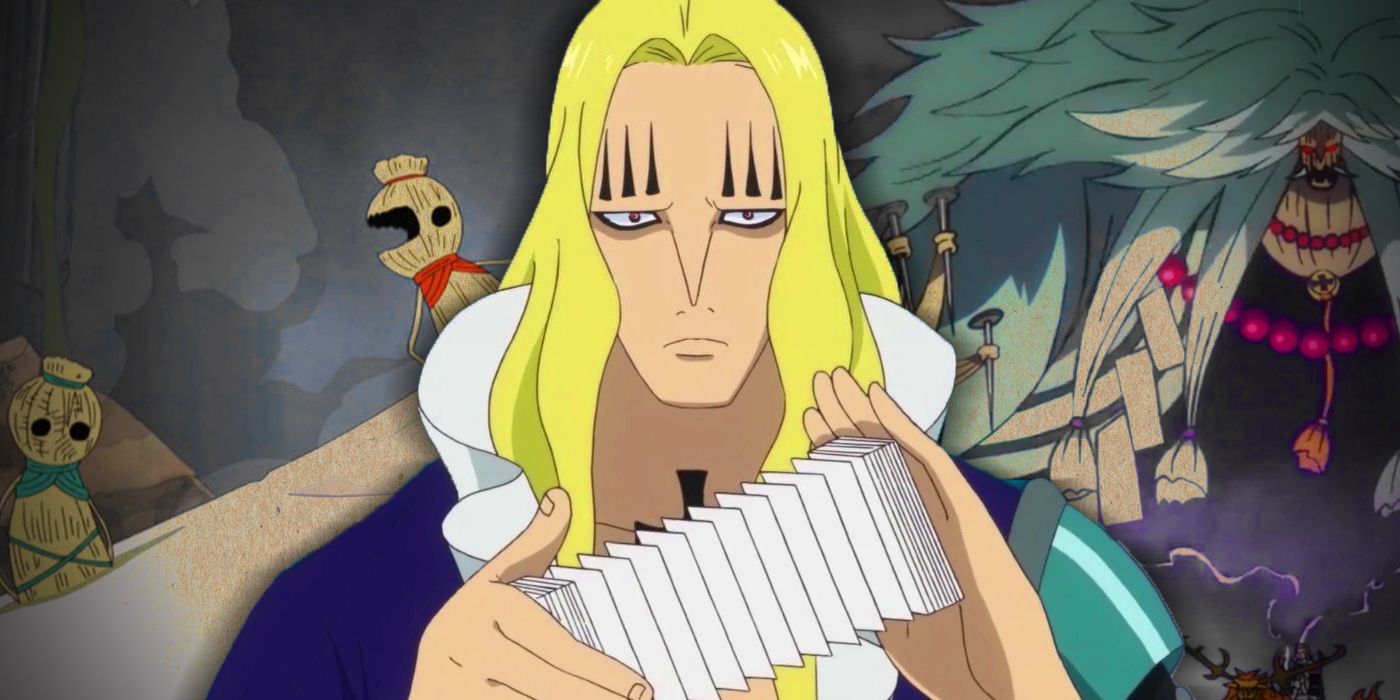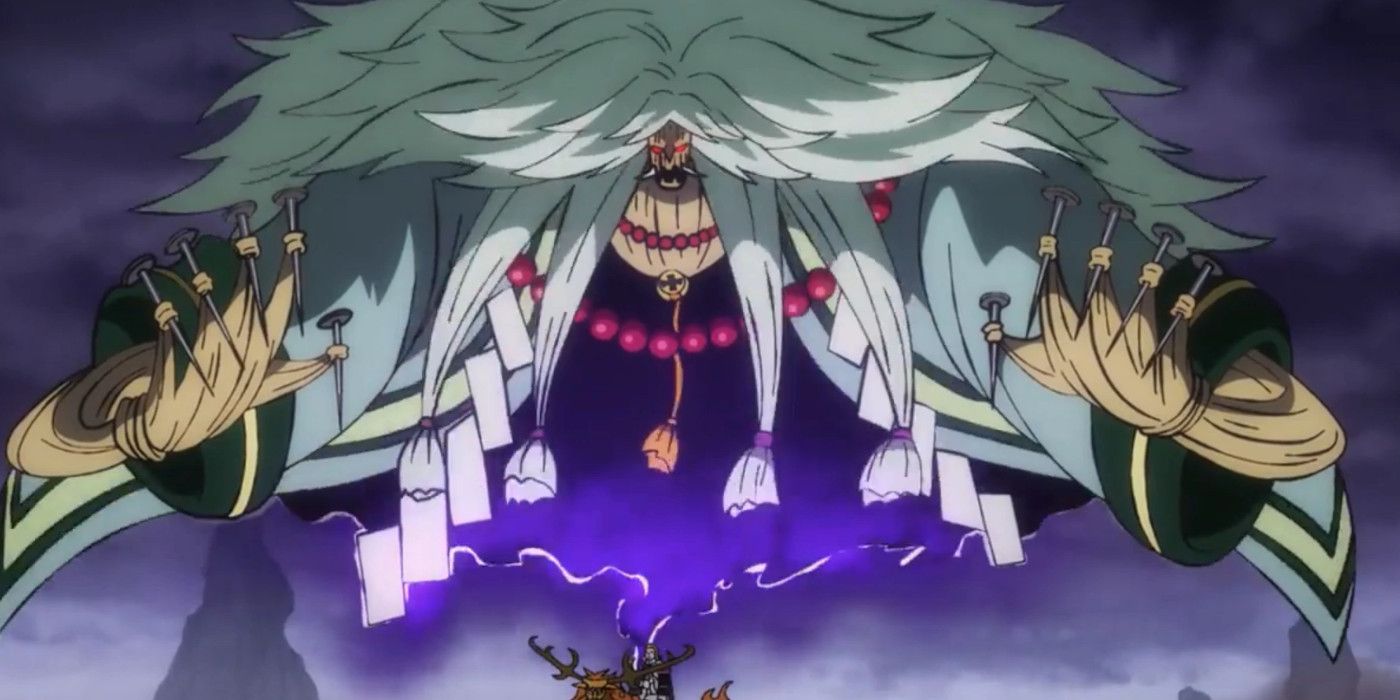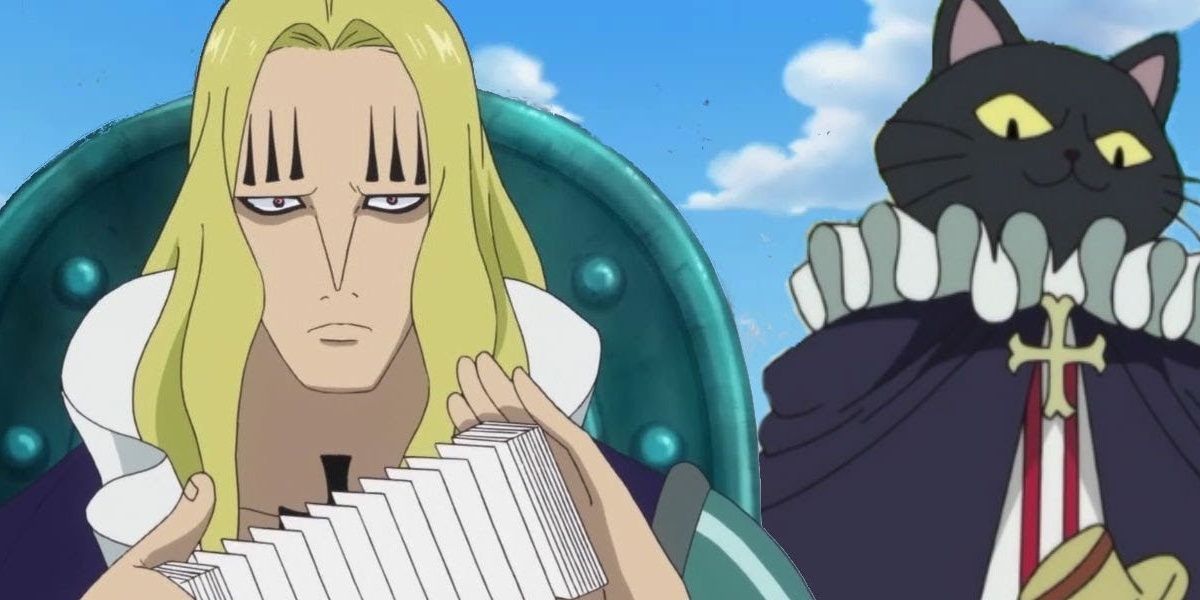WARNING: The following contains spoilers for One Piece Chapter #1029,"The Tower" by Eiichiro Oda, Stephen Paul and Vanessa Satone, available in English via Manga Plus and Viz Media.
Divining one's future is a practice as old as time. Over the centuries, various techniques and tools have been created in an attempt to catch a glimpse of what the future holds. Many people scoff at the idea nowadays, while others use these techniques as inspiration in creative media. One Piece creator Eiichiro Oda has taken the concept of Tarot cards and used them as a basis for Basil Hawkins' Strawman Cards.
Thanks to eating the Wara Wara no Mi, Hawkins has the ability to manipulate straw, create dolls that channel any damage taken to a specific target, and forge a giant scarecrow-like reaper. The movements of the strawman are somewhat determined by what card Hawkins pulls from the deck.
So far, One Piece has shown five of the cards and their meanings: The Fool, Reversed is the card of infighting and causes opponents to turn on each other; The Hierophant means reinforcements and that Hawkins' opponent will receive help from someone -- though, if Reversed, it causes the strawman to chase the opponent. There's also the Death card, which means destruction when Upright and causes the strawman to attack with a large scythe. Finally, The Tower card represents a collapse of the old, though its effects weren't shown because Killer defeated Hawkins before it could go into effect. The fifth card also has the hidden meaning of "a new path forward."
Hawkins' depicted cards in One Piece are actually part of the real-world Tarot cards, a deck that consists of roughly 78 cards divided into two categories. The first is the Major Arcana, beginning with The Fool (Number 0) and ending with The World (Number 21). This is the category Hawkins' cards come from. The cards that make up the Major Arcana tell a story of someone (The Fool) unknowing and new to the world going on a journey to learn and develop as a person. It ends with The World, which represents completion and harmony.
The second category is the Minor Arcana. This consists of the remaining 56 cards, which are further divided into four suits that represent the details of everyday life: Wands, which represent the element of fire, creativity, passion, willpower, and inspiration; Cups, representing water, emotions, love, intuition, and relationships; Swords represent air, intelligence, logic, truth, and conflict; and Pentacles, also known as Coins, represent resources, health, finances, manifestation, and the element of earth. Each suit has cards numbered two through ten, with an ace card, as well as four court cards called The Page, The Knight, The Queen, and The King. Together with the Major Arcana, these cards work together to tell the reader what actions may need to be taken to cause change within their lives.
Tarot cards date back to at least the 15th Century, where they were used as playing cards. They are believed to have been created in Italy sometime during the 1430s and eventually spread across Europe. The original playing cards consisted of the Minor Arcana, but over time, the Major Arcana set was added as "trump cards." While they weren't initially created as a tool for divining, that changed once the printing press was invented and cards could be mass-produced.
The modern version of the cards today are based on the works of Arthur Waite and the occult group Order of the Golden Dawn. White and artist Pamela Coleman Smith created the version of the Tarot in 1909 that many artists draw inspiration from today: The Rider-Waite Tarot. The imagery they chose was based on the Italian Sola Busca version of the cards alongside imagery from Kabbalah, which is a form of Jewish esotericism. If you go into any big-chain bookstore, you're bound to find a copy of this deck or some variation of it.
Spreads are a popular method in using the cards, with each position representing a certain aspect of the situation in question. Three-card pulls are common, usually representing "Past, Present, Future." There are also more complex spreads, sometimes using up to ten cards or more. Single card pulls, like what Hawkins uses in One Piece, are also common, usually to represent what the reader should focus on for the day. The cards' position and orientation will denote a certain meaning. If a card is in reverse, it usually represents an imbalance or an extreme situation of the archetype that is depicted in the card. Not every reader uses reversal meanings, but they are common.
With all this new information in mind, let's look at Hawkins' five cards and see what they would mean using the Rider-Waite interpretations. The Fool represents innocence and new beginnings, but when in reverse, it represents recklessness and lack of awareness. The Hierophant represents tradition and conformity, as well as pursuit of knowledge. When in reverse, it represents rebellion and a new approach to a situation. The Death card, despite how it's been depicted in media, doesn't actually represent physical death. Instead it represents a metaphorical death, the end of a cycle, and change. Finally, The Tower card represents pride, disaster, and a breakdown of something important. Looks like the title of One Piece Chapter #1029 wasn't too far off the mark on that last one.



